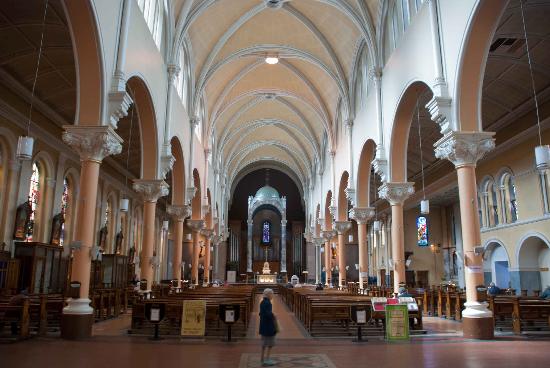Raising Dublin, Raising Ireland: A Friar’s Campaigns – Father John Spratt, O.Carm.
Fergus A. D’Arcy
(Carmelite Publications, €24.99)
Felix
M.
Larkin
Lytton Strachey, in Eminent Victorians, writes of Cardinal Manning of Westminster that “he belonged to that class of eminent ecclesiastics – and it is by no means a small class – who have been distinguished less for saintliness and learning than for practical ability”.
John Spratt, born in Dublin in 1796 and associated with Whitefriar Street church in Dublin for most of his priestly life, was another such ecclesiastic.
Fergus D’Arcy, in this very comprehensive life of Spratt, describes him as “by far the most overtly political priest [in Ireland] over the course of 40 years of public life and discourse”. He waged relentless campaigns against poverty, drunkenness and homelessness. As Professor D’Arcy points out, problems of similar kind have come back to plague us – which makes this a timely book.
D’Arcy considers the establishment of St Joseph’s Night Refuge for Homeless Poor in Cork Street, Dublin, in 1861 to have been Fr Spratt’s “most enduring charitable legacy”. In its first year, the Refuge took in 29,124 destitute people, averaging 560 per week. It was still going strong a century after its foundation.
One element
The Refuge was but one element of Spratt’s philanthropic work in Dublin. He also founded the Female Blind Asylum at Portobello (later transferred to Merrion) and was the guiding spirit behind the Whitefriar Street industrial schools and St Peter’s Orphanage in nearby Aungier Street. He raised funds for famine and cholera relief, and strongly supported the temperance movement – though his relationship with Fr Mathew was not always harmonious, due perhaps to a clash of egos.
In addition, he was for nearly 40 years honorary secretary to the Sick and Indigent Roomkeepers Society – Dublin’s oldest charity, founded 1790.
His involvement with the Roomkeepers – a strictly non-denominational charity – points to an aspect of Spratt’s life and work that D’Arcy correctly highlights. That is “how interconfessional or ecumenical he was, uniquely for his age…out of step with his Cardinal Archbishop [Cullen] and with a Church that was now coming into its own dominance”. He happily co-operated with “Protestants of all confessions” in his philanthropic work and in the temperance movement.
Spratt’s philanthropy was complemented by what D’Arcy calls “his abiding commitment to political liberalism”.
He was a staunch supporter of O’Connell and his movements for Catholic Emancipation and Repeal from the 1820s to the 1840s, and he was a leading figure in amnesty campaigns for the Young Irelanders in the late 1840s and the Fenians in the 1860s – though not in sympathy with the extremism of the latter, which he dismissed as “the ardour and inexperience of youth”.
Whitefriar Street Church is his monument. He built it in the 1820s, was its first prior and died there in 1871 – having served as provincial of the Irish Carmelites for the previous eight years. Moreover, he procured the relics of St Valentine for the church, thereby making it a place of pilgrimage for young people on February 14 each year.
The most remarkable object in the church is, however, the wooden statue of Our Lady of Dublin – dating from the early 16th Century and thought to have been originally in St Mary’s Abbey, off Capel Street. Legend has it that, after the suppression of St Mary’s Abbey in 1539, it was hollowed out from behind and used as a drinking trough for pigs. Spratt discovered it in an antique shop in Dublin in the 1820s, bought it and had it restored.
This is a big book, running to 620 pages – beautifully produced, with many illustrations.
It is a fitting tribute to Fr Spratt, undoubtedly one of Dublin’s eminent Victorians.


 Whitefriar Street Church
Whitefriar Street Church 